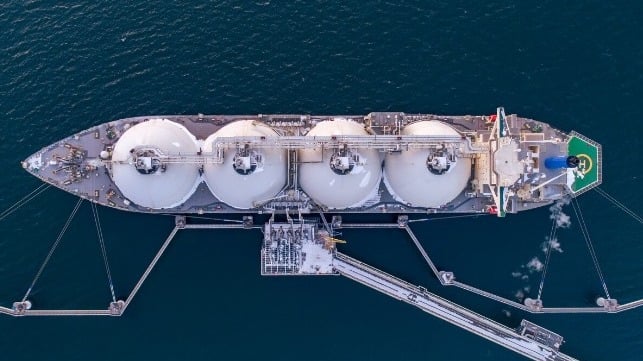White House Walks Back U.S.-Built LNG Carrier Ambitions
The USTR now says that it won't suspend LNG export licenses if U.S.-built LNGCs aren't available

The Office of the U.S. Trade Representative has decided to further tweak its proposed port fee structure for Chinese-built vessels, rolling back a proposed deadline for U.S.-built LNG carrier capacity and a fee that would hit all PCTCs in the Maritime Security Program.
USTR's original proposal was released in April, and its headline provisions were focused on fees on Chinese-built container ships. Less noticed, further down the list, it also proposed steep new fees on all foreign-built vehicle carriers (PCTCs) and laid out an ambitious LNG carrier construction and utilization requirement for American LNG exporters.
On Friday, the office proposed modifications to its PCTC fee plans. Instead of charging $150 per car equivalent unit, based on lane-meters of capacity, it will now charge based on each PCTC's net tonnage. This will make the fee easier to administer and will help close off a potential avenue for fee evasion, the office said. Like lane-meters, net tonnage is a measurement of the vessel rather than the cargo, so even empty PCTCs arriving in ballast will still be charged - a point that foreign critics have emphasized previously.
USTR also proposed "targeted coverage" for imposing the fee on the foreign-built PCTCs that are flagged into the United States registry for the Maritime Security Program. The agency noted that the MSP "reduces dependence on China," a core objective of the new port fees.
The office also rolled back the enforcement of its ambitious timetable for imposing a U.S.-built LNG carrier requirement on the U.S. LNG export industry. In the original proposal, USTR called for the LNG industry to begin shipping one percent of all of its exports aboard U.S.-built LNGCs by 2029. If LNG exporters did not meet this timeline, USTR proposed to begin suspending export licenses.
The challenge for this requirement is that this vessel class does not currently exist: the last LNGC delivered by an American yard entered service in 1980 and was scrapped in 2021. The shipyard that built that final hull closed in 1986.
Given the challenges of scaling a domestic LNG carrier construction program within four years - an uncertain prospect with real technical risks - LNG exporters informed USTR that they do not favor having their licenses suspended if the ships aren't ready by 2029. USTR agreed, and it now plans to remove the license-suspension clause from the proposed regulation in order "to allay concerns about the provision’s impact on the U.S. LNG sector."
